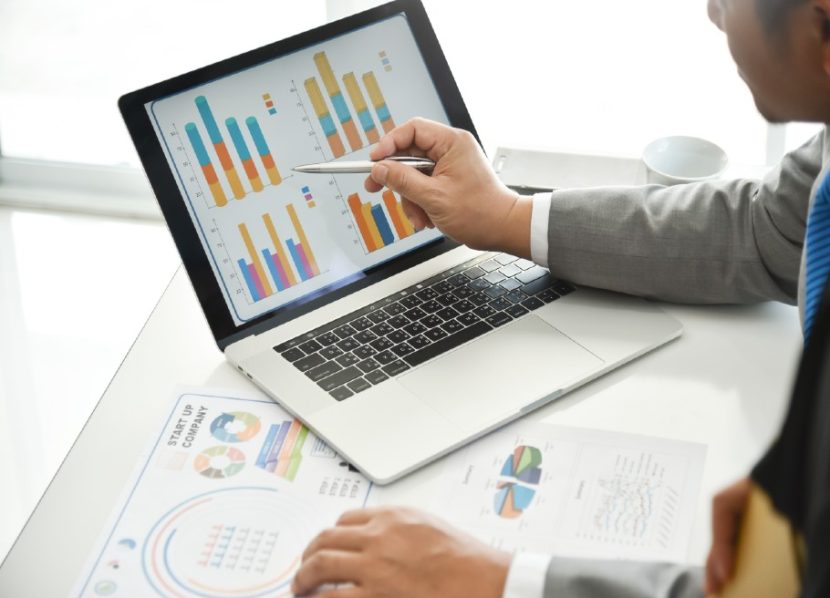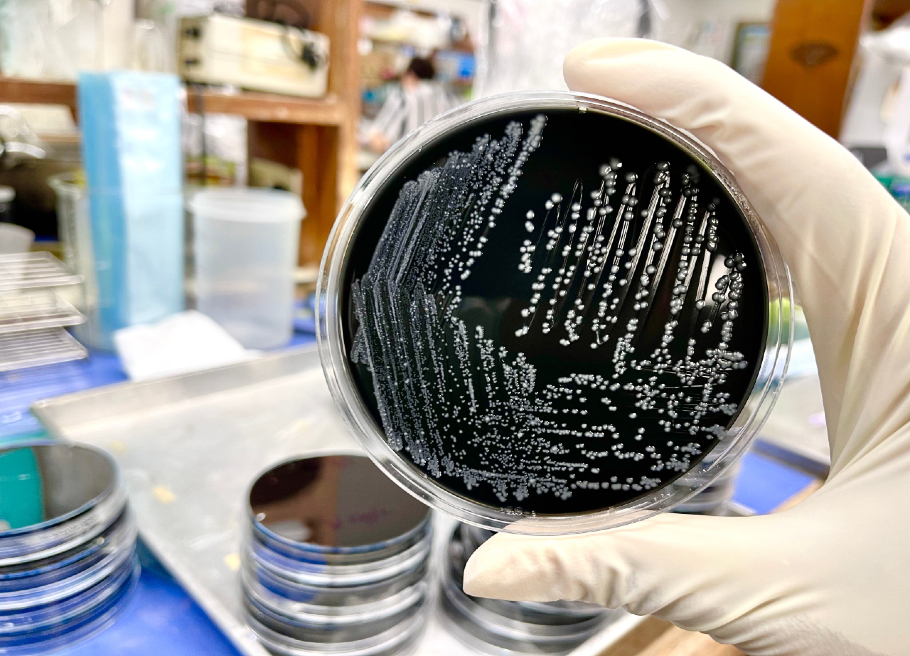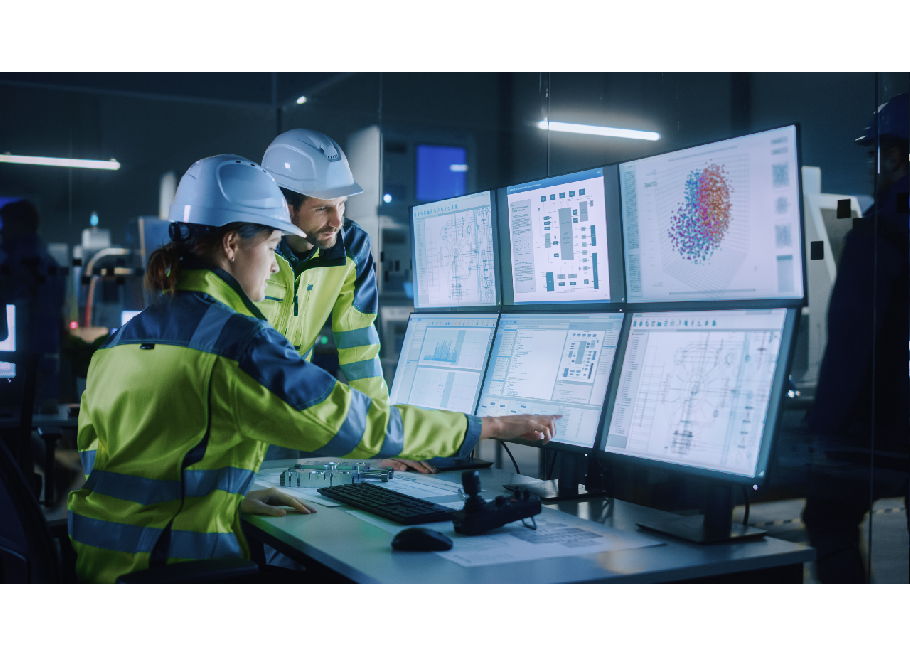The Importance of AI and Predictive Analysis in Food Safety Management Systems
By Maria-Eleni Dimitrakopoulou
In the 21st-century food safety challenges remain a hurdle since incidents all over the world are constantly reported. Foodborne pathogens, chemical pollutants, poor hygiene practices, and environmental hygiene are major threats to public health.
Therefore, scientists are focused on developing innovative technologies for the rapid detection of contaminants in foodstuffs. Besides advanced lab-based techniques for detection of contaminants, food safety experts and public health authorities are continuously investigating appropriate preventive measures to minimize the hazards throughout the supply chain and to ensure existing food safety management systems are regularly updated.
ΑΙ technologies have emerged as a tool that can support practices for safe and sustainable food products.
There are a variety of predictive models that can enhance food safety across the supply chain. Mathematical models for predictive microbiology such as kinetic, probability, empirical and mechanistic models have become invaluable for quantitative risk assessments in food industry. These models can provide information about the ecology and behaviour of foodborne pathogens, spoilage microorganisms, toxins or even about processes and treatments in the production line. An Italian web-based application for predictive microbiology, Praedicere Possumus, a model for prediction of spoilage bacteria in soybean, and predictive analysis for the distribution performance in the dairy industry is one such model which aims to mitigate potential risks.
ΑΙ technologies have emerged as a tool that can support practices for safe and sustainable food products. Through AI technology, a “knowledge-based system” can be constructed based on data from a variety of sources. Computers can utilize all of this information and imitate the decision-making abilities of food safety experts. AI methodologies utilize specific techniques for model construction. The most common predictive analysis models are clustering, classification, forecast, outliers, and time series models which include two well-known predictive algorithms: machine learning and deep learning.
Get Unlimited Access to Our Comprehensive Library of Food Safety eBooks – Join Today
So, after determining what predictive questions to ask and what information is desired, an appropriate predictive model can be assigned. Additionally, AI technologies can be applied on all stages of the production line. They can be applied for prediction, or to enhance monitoring, quality control, sensory evaluation, fermentation or drying processes, and even business strategies. More effective and optimal management of inventory in a food company and logistics by AI technologies can lead also to enhancement of sustainability practices such as reduction of food waste and Co2 emissions. It is worth mentioning that these data driven approaches can also be applied in the agricultural domain, adding value to the production of safe and sustainable food products from farm to fork. For example, soil, crop, weed, and disease management are integral parts of agricultural activities, and they yield a plethora of data. Based on this data, AI approaches can predict texture and moisture of soil, provide estimation of crop yield, enhance control of diseases etc.
AI technologies also have great potential as a tool to design preventive measures. AI models leverage algorithms and can easily compute all numeric variables related to food safety, such as historical data of foodborne incidents, reports from food safety authorities, financial data, climate conditions, even behavioral data. Predictive models, which take into account the product type, past events, trade volume and pricing, can predict with high accuracy future food safety and fraud events. According to Dr. Bob Brackett, Director of the Institute for Food Safety and Health at the Illinois Institute of Technology, “Predictive analysis based on AI has the potential to revolutionize food safety by allowing us to identify and mitigate risks before they become actual hazards. With the ability to analyze vast amounts of data in real-time, AI can help us stay one step ahead of potential problems, ensuring that our food supply remains safe and secure for all.”
Specifically, AI models based on a variety of drivers can provide predictions with high accuracy for any food matrix, hazard, or contaminant. Furthermore, food supply chains are vulnerable to drivers such as climate, agricultural practices, pricing, and political instability, that affect their performance and influence the quantity and quality of the food being produced. The correlation of the availability of commodities and pricing has been validated in several studies on food safety and fraud in the global supply chain. Climate change is also a driver of food safety risks and its impact on the availability of agricultural products has been examined. By gathering all this data for an AI-model construction, existing food safety management systems can be strengthened. According to Neil Marshall, ex- Global Director of Quality & Food Safety at The Coca-Cola Company, “It’s important for global brands to understand the upside potential of AI in risk management. It can bring huge productivity benefits, saving time, money, and potential recalls.”
The war in the Ukraine has majorly affected the availability of several agricultural products (wheat, maize, barley, sunflower seed) and according to recent publications, food production and food quality are areas that will be most impacted. The economic impacts on the food supply chain are predicted to have a substantial influence on food safety and quality in various ways, including price increases of energy causing rising prices of food, feed, fertilizers, and changes in seasonal worker availability, among others . Limited availability and increased prices of agricultural products could lead to an increase in unsafe food products within the next 24 months. For example, an increase in mycotoxins in cereals and nuts is also expected due to climate change (e.g., recent European heat waves), as well as longer-than-usual storage time. AI powered predictive analytics models can be used to capture the complex interaction between all of these drivers and enable a new generation of high accuracy forecasting.
Recently, data-driven approaches based on advanced AI techniques have been successfully introduced as commercial solutions, offering validated forecasting capabilities for short and long-term emerging issues for a large set of food ingredients and hazards. FOODAKAI and HOLiFOOD are well-known food safety intelligence platforms that enables monitoring of risks throughout the food supply chain. FOODAKAI had predicted many emerging risks that would affect specific ingredient and product categories in 2022. The emerging risks identified caused a total of 2,299 incidents. It should be highlighted that 235 fraud cases were about artificial colorants/synthetic in milk and milk products, while the same number was indicated also in cheese.
Predictive analysis could ensure access to safe food for everyone, and could be a key preventive measure especially for developing countries where they are political or economic issues. Being able to answer real-time questions about what is likely to happen enhances the mitigation of foodborne incidents and enables more effective monitoring and management of spoilage and fermentation microorganisms or of chemicals residues and toxins. Predictive analysis is a proactive approach that can provide an early-warning and enhance consumer satisfaction, business finance, and public health.
Get Your All-Access Pass to Our Insightful Virtual Conferences & Premium Content Today
About the Author:
Maria-Eleni Dimitrakopoulou (PhD) completed her studies at the Agricultural University of Athens. She continued her postgraduate studies at Agricultural University of Athens and acquired a specialization in Integrated-organic production and certification standards. In 2022, she defended her PhD thesis at the Environmental Microbiology Unit Laboratory, of the Department of Public Health, Medical School, University of Patras. Currently, she works as a Research Project Manager on the Innovation team at Agroknow.

-
 FeaturedRisk management
The Cost of a Breach: What a Cyberattack Could Mean for Food Safety Recalls
FeaturedRisk management
The Cost of a Breach: What a Cyberattack Could Mean for Food Safety Recalls
-
 FeaturedRisk management
Securing the Food Chain: How ISO/IEC 27001 Strengthens Cybersecurity
FeaturedRisk management
Securing the Food Chain: How ISO/IEC 27001 Strengthens Cybersecurity
-
 FeaturedRisk management
Revolutionizing Food Safety Training: Breaking Out of the “Check-the-Box” Mentality
FeaturedRisk management
Revolutionizing Food Safety Training: Breaking Out of the “Check-the-Box” Mentality
-
 GFSI Standards
GFSI 2025: Building Trust, Tech-Forward Solutions, and Global Unity in Food Safety
GFSI Standards
GFSI 2025: Building Trust, Tech-Forward Solutions, and Global Unity in Food Safety
-
 FeaturedFood Safety
Integrated Pest Management: Strategies to Protect Your Brand’s Reputation
FeaturedFood Safety
Integrated Pest Management: Strategies to Protect Your Brand’s Reputation
-
 FeaturedFood Safety Culture & Training
No Open Door Policy: Challenges That Impact Pest Control in Food Processing Plants
FeaturedFood Safety Culture & Training
No Open Door Policy: Challenges That Impact Pest Control in Food Processing Plants




